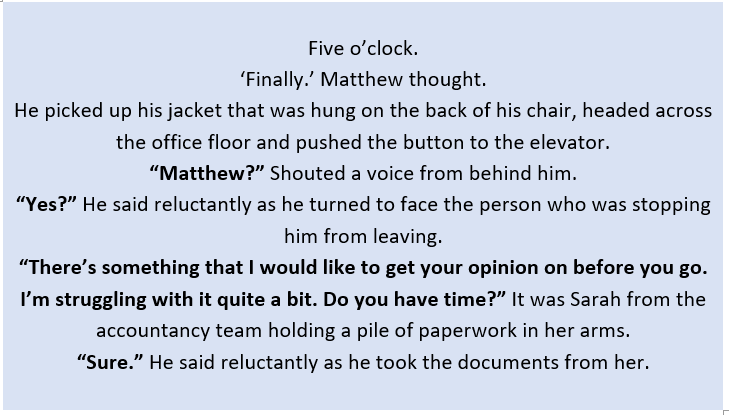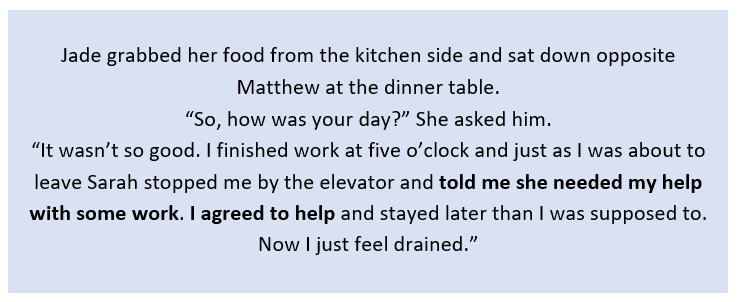In this post
The perspective of a piece of writing is the way in which the situation is looked at and by whom (the point of view). This includes the narrator as this shows us how the story is told. However, perspective consists of more than just narration as the perspective of a situation can shift between the inclusion of the character’s speech.
Direct Speech
Direct speech is the speech that appears in the narrative that has come directly from the characters themselves. It is a direct quotation of what has been said. Take a look at the example below; the direct speech has been highlighted for you in bold.

Notice how the direct speech appears in quotation marks. Whenever you are writing direct speech this is a rule which must always be followed. Direct speech has allowed the reader to be aware of Sarah ‘struggling … quite a bit’ from her own perspective. This makes the information more reliable as it is coming straight from the character themselves. Direct speech is a good technique in developing characterisation (we will discuss this more later in this unit).
Because direct speech comes straight from the characters, you might have noticed that although the narrative is told in the past tense, the direct speech appears in the present – remember you are directly quoting the speech exactly how it was originally said, and something is always said in the present.
There is another type of speech in narrative writing. This is called reported speech.
Reported Speech
Reported speech is different to direct speech in that it is not direct quotations of what has been said; it is reported. Therefore, we do not use quotation marks to report this speech. It is more common in diary entries and reports rather than narrative writing. Take a look at the extract below for an example of reported speech. The reported speech has been highlighted for you in bold.

Here, our character from before, Matthew, is reporting what Sarah said to him near the elevator and then his reply. Because he is reporting what has been said it is therefore in the past tense. You may find that reported speech does not flow, or appear as sophisticated, as direct speech. In narrative writing it is good to use reported speech but you should also make sure you use direct speech as well to mix it up a bit – otherwise it can appear dull and more like a diary entry than a piece of narrative writing.
Sometimes, you will find reported speech contained within direct speech. See below for an example (the reported speech has been highlighted in bold for you).

Above you can see that we have added the example of reported speech that we used earlier into some direct speech.



